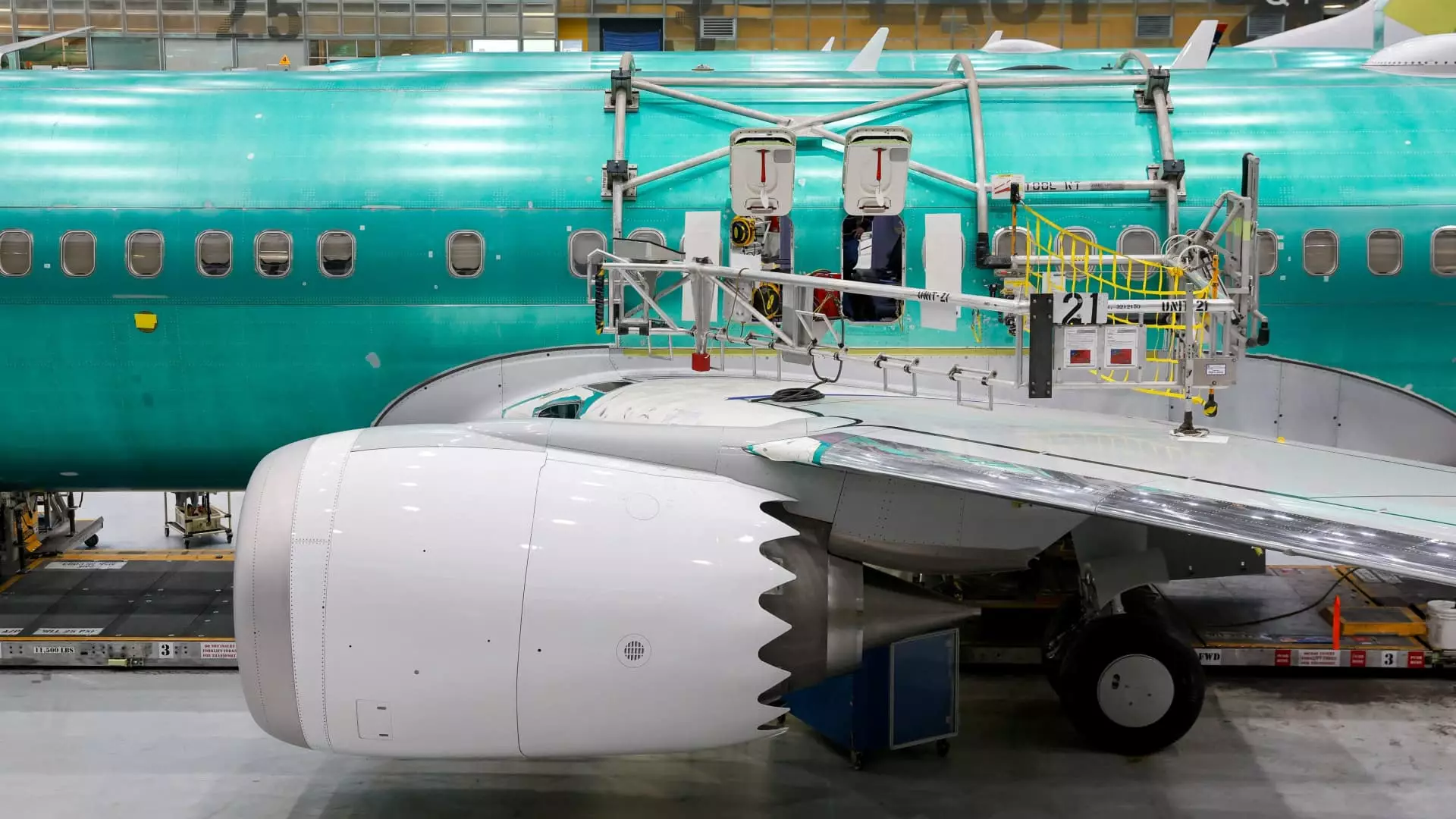Boeing has found itself at a critical juncture, facing the consequences of years marked by safety lapses and production challenges. The company’s troubles resurfaced prominently a year ago when an Alaska Airlines Boeing 737 Max 9 experienced a harrowing in-flight incident: a fuselage panel, concealing an unused emergency exit door, detached during flight. Although the aircraft managed to make a safe emergency landing in Portland, the incident highlighted grave safety oversights, namely the omission of critical bolts in the production process. The implications of such failures have severely impacted Boeing’s reputation as a leading U.S. exporter, contributing to a staggering 30% decline in its stock value over the past year, juxtaposed against a robust 27% growth in the S&P 500.
Leadership Changes and Quality Control Initiatives
In response to its mounting challenges, Boeing’s leadership has undergone significant restructuring, culminating in the appointment of a new chief executive, Kelly Ortberg, a seasoned aerospace veteran. Under his stewardship, the organization is placing a renewed emphasis on safety and quality. The company has instituted random quality audits in factories, implemented comprehensive training programs for factory workers, and is actively buying back parts from suppliers to ensure defect reductions in their 737 fuselages. Furthermore, Boeing is confronting its legacy of production errors that stemmed from “traveled work” — a practice where tasks are executed out of sequence, resulting in flawed manufacturing. By addressing employee feedback and fostering open dialogue between management and staff, Boeing is trying to rebuild its internal culture to prioritize safety above profits.
The Federal Aviation Administration (FAA) has increased its scrutiny of Boeing’s operations post-incident, effectively capping production of its flagship 737 Max jets, which are still being manufactured below optimal levels. FAA Chief Mike Whitaker, who is set to resign, has underscored the permanency of such oversight, asserting that the path to recovery requires not just quick fixes but a fundamental cultural transformation at Boeing. He insists on a commitment to prioritizing safety and quality that transcends any singular year or project. This acknowledgment of the need for an ingrained safety culture resonates deeply, especially considering Boeing has not reported an annual profit since 2018—a year marred by the catastrophic crashes of two 737 Max jets that claimed 346 lives.
Boeing’s financial woes have been devastating, with losses exceeding $30 billion since 2019. The new leadership faces formidable tasks, as they must navigate increased production output without the defects that have plagued previous efforts. This fall, Boeing raised substantial funds to mitigate the ongoing crisis and announced plans to trim its workforce by approximately 10% from its current employee base of 170,000. The strategic choice to downsize indicates a deliberate pivot towards enhancing operational effectiveness—a philosophy that Ortberg reinforced during his inaugural earnings call by advocating for a more focused and efficient approach to production.
In what was a tumultuous start to Ortberg’s tenure, machinists initiated a strike lasting nearly two months, culminating in a labor deal that included generous wage increases. While the negotiations successfully resolved immediate labor tensions, they also laid bare the challenges Boeing faces in retaining experienced staff and addressing concerns over benefits like pensions. As production resumes, Boeing must find a balance between workforce stability and meeting pent-up demand for aircraft deliveries, especially in a post-pandemic environment where airlines are eager to expand their services.
As Boeing steps into another year of rebuilding, it is clear that restoring confidence among stakeholders—ranging from employees and regulators to customers—is paramount. The commitment to a thorough cultural overhaul, reinforced by stringent safety protocols and manufacturing integrity, is fundamental to the company’s long-term viability. While challenges abound, the groundwork being laid today may define Boeing’s trajectory for years to come. The critical question remains whether these changes will not only stabilize production but ultimately rejuvenate Boeing’s reputation as a leader in the aerospace industry. For Boeing, the journey ahead requires diligence, transparency, and a steadfast dedication to quality—a mission that underpins the successful revival of one of America’s iconic companies.

